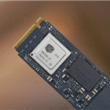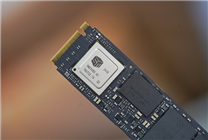Samsung Electronics Shifts Focus: A Strategic Realignment in Memory Chip Production
Summary:
- Samsung Electronics is shifting some memory chip production from NAND flash to DRAM lines as market demand evolves.
- The DRAM market is surging, with significant price increases and supply shortages prompting manufacturers to adjust strategies.
- Despite reducing NAND production in South Korea, Samsung aims to maintain a stable global supply chain through its Xi’an facility in China.
On November 21, reports emerged highlighting a significant strategic adjustment by Samsung Electronics regarding its memory chip production capacity. The company is set to convert select NAND flash memory production lines in its Pyeongtaek and Hwaseong factories in South Korea to DRAM production lines. This decision reflects a broader trend observed in the industry, as market demands shift drastically.
As the demand landscape for memory chips becomes increasingly differentiated, Samsung is adopting a more cautious stance toward the NAND flash memory market. Meanwhile, it is proactively responding to the soaring demand for DRAM products. Industry experts indicate that this adjustment is critical, given the fluctuating nature of the current market.
Market analysis revealed that the four leading NAND manufacturers globally—including Samsung, SK Hynix, Kioxia, and Micron—are all adjusting their production strategies. They plan to scale back NAND production in the latter half of 2025, which is expected to exacerbate the ongoing increase in flash memory prices.
Conversely, the DRAM sector is experiencing unprecedented volatility, with prices escalating rapidly. Reports indicate that some server clients are willing to pay up to a 70% premium for DDR5 memory modules due to supply shortages. This illustrates the growing pressure on manufacturers to ramp up production to meet surging demand.
Given the anticipated DRAM shortage, some technology companies have begun negotiating production capacity allocations in anticipation of demand through 2027. This proactive approach underscores the urgency to secure available resources amid tight competition.
Interestingly, while Samsung is contracting its NAND production capabilities in South Korea, the company is simultaneously increasing output in its Xi’an facility in China. This strategy seeks to establish a form of equilibrium in production, ensuring that the global NAND supply chain remains stable even as local capacities decline.
In summary, Samsung’s strategic pivot in memory chip production—from NAND to DRAM—reflects both the immediate and future demands of the tech landscape. By balancing domestic adjustments with increased output abroad, Samsung aims to sustain its competitive edge while navigating the complexities of a rapidly evolving market.
This shift not only highlights Samsung’s agility in responding to market fluctuations but also points to broader trends affecting technology companies globally. As industries continue to evolve, the capacity for adaptation will be crucial in ensuring stability and reliability in supply chains.






